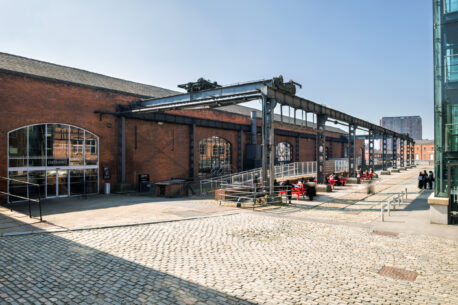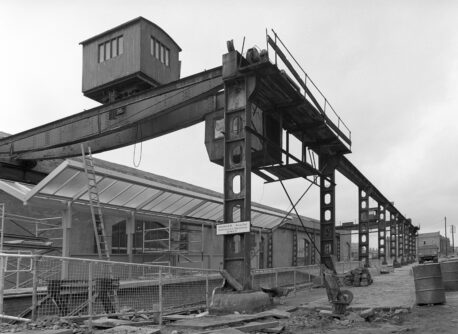The next stage of one of the most significant heritage restoration projects currently underway in the UK has now begun at the Science and Industry Museum.
Essential repair work is now taking place to restore the museum’s iconic 1830 Viaduct and the gantry which connects to the Power Hall.
This next stage of conservation work is part of a multi-million-pound restoration programme across the Science and Industry Museum’s globally significant site. Visitors will be able to see engineering in action as scaffolding is erected around the gantry to enable much-needed repair and conservation works.
Plans for this phase include the temporary removal of track and ballast, drainage of water currently trapped across the Viaduct, the application of new waterproofing solution to future-proof the Viaduct and the reinstallation of track to reflect the site’s original history as a working railway station.

The Viaduct is part of the site’s original railway station, which opened in September 1830. Liverpool Road Station was the Manchester terminus of the world’s first inter-urban railway, which connected industrial Manchester with Liverpool’s docks.
The railway’s engineer, George Stephenson, designed the Viaduct to tackle the problem of Liverpool Road’s sloping land, creating a flat upper level to support the railway tracks. Mostly hidden by the station’s buildings, the Viaduct runs from the middle of the Power Hall out towards Water Street.
Along with the 1830 Station, it makes up the most complete surviving early railway station complex in the world and stands as a proud reminder of Manchester’s integral role in the Industrial Revolution.
The gantry supported travelling cranes that moved heavy goods from one wagon to another. This was cutting-edge technology at the time and was built to help workers handle the loads coming on and off the railway.

The gantry lies within the curtilage of the Grade II listed Power Hall, due to reopen in Spring 2025. Essential repairs will ensure the gantry can remain a key feature of the Science and Industry Museum.
Work on the gantry will include the stripping of old paint, removing rust and repairing areas impacted by water damage, structural repairs to metal work, the introduction of new waterproofing measures and repainting to defend against future corrosion.
The conservation of the gantry and the 1830 Viaduct will take place alongside additional restoration work happening to buildings across the site including the New Warehouse and Upper Yard.
It follows the restoration of the Station Agent’s House with Landmark Trust and the award-winning new Special Exhibitions Gallery which opened in 2021. This work will run alongside the current repair and improvement of the Power Hall and the site’s ambitious decarbonisation work.
Future plans will enable visitors to enjoy every space across the museum in the coming years. This will include a new experience in the 1830 Station, an interactive ‘Wonderlab’ gallery for young visitors, a new connecting route through to Aviva Studios, significant new outdoor landscaping and public realm provision and opportunities for outdoor play.
The restoration work to the gantry and 1830 Viaduct is expected to be complete by Spring 2025 when the museum also plans to reopen its Power Hall. The museum will remain open throughout and is available for evening events in the Revolution Manchester Gallery and in the 1830 Warehouse across 2024 and 2025.
Featured image credit: Drew Forsyth
- Words:
- Bradley Lengden
- Published on:
- Thu 16 May 2024